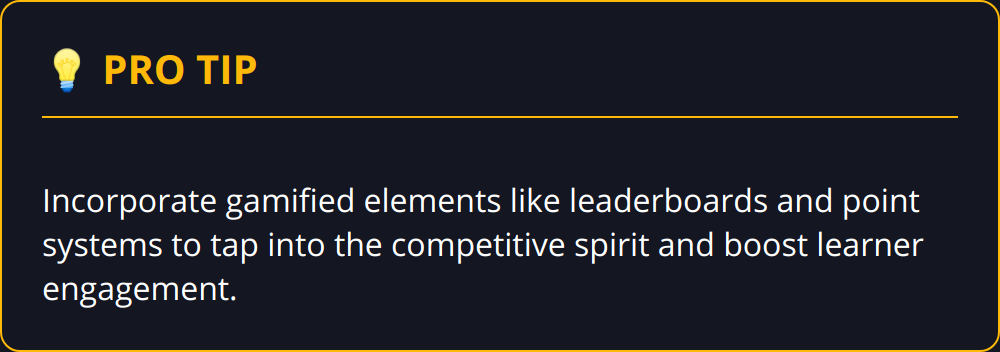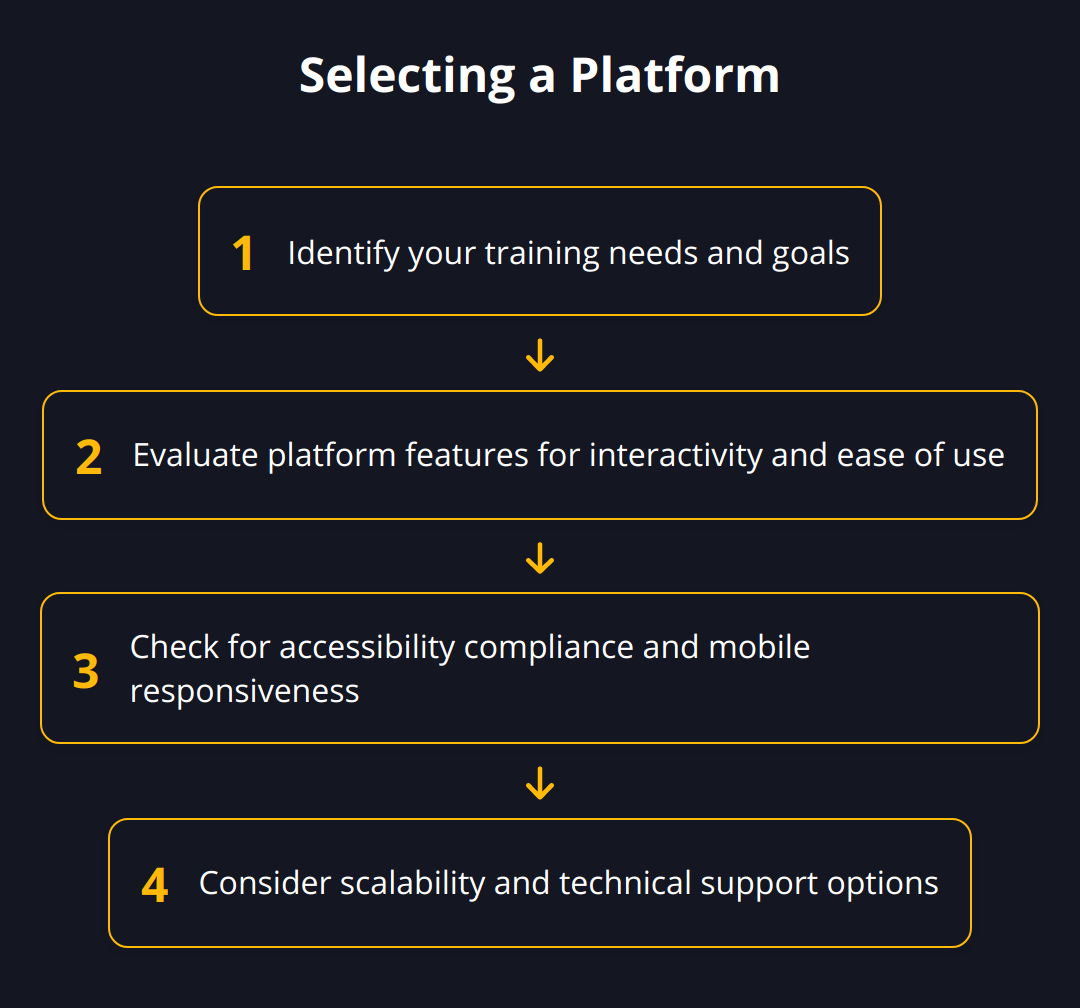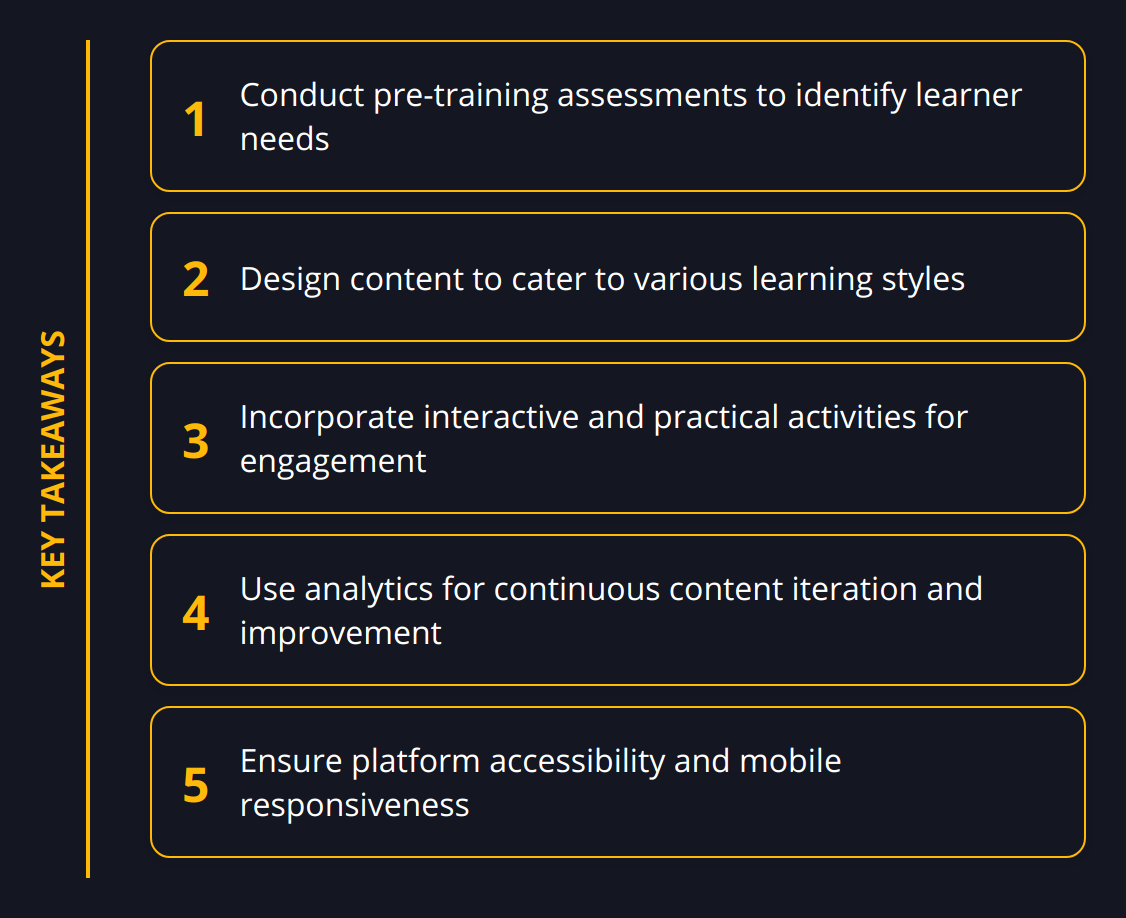We at newroom connect understand that an effective virtual training program is the backbone of continuous learning and development in any organization. Crafting such programs requires a deep understanding of your audience’s unique needs and learning preferences.
Success hinges on integrating components that drive engagement and facilitate knowledge retention. Get ready to explore best practices for delivering impactful virtual training that caters to today’s diverse learners.
Prioritize Learner Analysis
When embarking on the journey of virtual training, understanding and acknowledging the learning needs of your audience must be the starting point. Each individual brings a unique set of skills and knowledge to the table, and failing to recognize this can lead to a one-size-fits-all approach that falls short of expectations. Below are actionable measures that help tailor training content for optimized learning experiences.
First and foremost, the assessment of skill levels and identifying knowledge gaps are non-negotiable starting points. Use data-driven approaches such as pre-training surveys or diagnostic assessments to acquire a clear picture of where your learners stand. This scrutiny exposes the chasms in proficiency and understanding that your program must bridge.
Next, the diversity in learning styles should guide the design of your content. Visual learners, for instance, may fare better with charts, infographics, and videos, whereas kinesthetic learners could benefit more from interactive simulations. Offering a range of content formats not only accommodates different preferences but also reinforces learning by engaging multiple senses.
Leveraging learner feedback is equally important—not just as a post-mortem, but as a consistent, iterative element of program design. Encourage ongoing dialogue through post-module reviews or mid-course surveys. This real-time adjusting of sails according to the prevailing winds of feedback ensures that your training remains relevant and impactful.
Here are some focused tips to put into action:
-
Profile Your Participants: Before designing your training, analyze the demographic, professional background, and technological fluency of your audience.
-
Customize Learning Paths: Create adaptive learning routes that allow individuals to skip what they already know and focus on unfamiliar or challenging concepts.

-
Engage Through Experimentation: Incorporate practical activities where learners apply concepts—this transforms passive ingestion of information to active problem-solving.
-
Measure and Adjust: Use analytics to track engagement and performance, and be prepared to iterate your content based on tangible insights.
Remember that the core aim is to create a culture of continuous improvement within your virtual training program. By shedding light on individual and collective learning needs, you not only elevate the educational experience but also empower each participant to contribute more meaningfully to your organization’s goals. The next chapter in this ongoing story must be as compelling and informative as the first steps of learner analysis, ensuring that your virtual training program is not just a fleeting endeavor, but a persistent growth mechanism.

Engaging Virtual Training
Engaging virtual training is more than a buzzword; it’s the lifeline of an impactful learning program. Materials that actively involve learners are more likely to stick, so here we focus on breathing life into virtual learning environments.
Dynamic training content that captivates and maintains interest is non-negotiable. Interactive elements such as quizzes and branching scenarios can transform a passive video into a choose-your-own-adventure, ensuring learners are not just consuming content, but are part of the narrative. This active involvement skyrockets retention rates.

Adding varied multimedia elements is not just recommended, it’s essential. Audio, video, animations, and even interactive e-books cater to various learning preferences, keeping energy levels high and boredom at bay. The goal is to tap into the visual, auditory, and kinesthetic senses simultaneously, for an all-encompassing learning experience. For insights into virtual reality’s role in training, consider our piece on virtual reality education.
Gamification is another powerhouse in digital learning. It leverages the competitive spirit to foster engagement and retention. Incorporating elements such as leaderboards, point systems, and badges appeals to the innate human desire for achievement and recognition, driving learners to invest more in their learning journey.

Continual assessment serves a dual purpose. It provides immediate feedback to learners, enabling them to understand their progress and areas needing improvement. For the organization, assessment data is a goldmine, offering actionable insights on content effectiveness and learner understanding. The trend towards micro-assessments shows promising results in keeping track of incremental knowledge gains, without overwhelming learners.
Here’s how you can make these concepts work for you:
-
Use interactive quizzes after each key section to reinforce learning.
-
Multimedia content should be omnipresent, not an afterthought.
-
Introduce gamified elements early on to set the tone for engagement.
-
Implement frequent, short assessments for continuous feedback.
When you inject life into virtual training with these methods, you don’t just create a program—you create an experience. Next, we’ll explore how to leverage technology to support and elevate these engaging training components, ensuring that your program doesn’t just meet expectations but exceeds them.
Platform and Collaboration Essentials
Selecting the ideal platform for your virtual training endeavors is like picking the right stage for a play – it’s foundational. A fit-for-purpose platform does more than just broadcast content; it offers tools for seamless interactivity, collaboration, and support. These features are vital to mimic the dynamism of face-to-face sessions and promote a collective learning environment, even from a distance.
For a start, the platform should offer user-friendly navigation. Both trainers and trainees should find it easy to access materials, participate in discussions, and track progress. Navigation ease significantly affects how participants perceive the training; a smooth, hassle-free experience keeps them focused on learning rather than on figuring out the technology.

When it comes to interaction and collaboration, video conferencing features shouldn’t be the end-all-be-all. Look for platforms that provide breakout rooms, which are brilliant for small group activities, discussions, and peer-to-peer learning. Moreover, integrate tools that support interactive elements, such as real-time polls and collaborative whiteboards. These elements break the monotony and foster engagement in real time.
Accessibility cannot be an afterthought – it’s essential. The platform must be accessible to people with disabilities, complying with standards such as WCAG and ADA. On top of that, considering the growing reliance on mobile devices, your training platform needs to be fully mobile-responsive. Flexibility in learning is not a luxury anymore; it’s the norm. Here, ensuring your content displays neatly on any screen size and orientation is just the tip of the iceberg.
Below are key pointers to take your virtual training platform from adequate to exceptional:
-
Look for platforms that allow custom branding, ensuring a consistent look and feel that aligns with your organization.
-
Ease of access is vital; ensure that joining sessions is straightforward, requiring minimal clicks or technical know-how.
-
Opt for a system with robust analytics – the ability to track user progress, engagement rates, and more gives you a bird’s eye view of the program’s impact.
-
Technical support is a safety net you can’t afford to ignore. Quick and responsive support can mean the difference between a minor hiccup and a complete halt in training.
-
Scalability is a must; as your organization grows, your platform should be capable of handling increased loads without performance dips.
In all, your choice of platform should be one that not only simplifies interaction between participants but also propels your content delivery to new heights. Taking all of these into account leads to more than an educated guess—it directs you to an informed decision that aligns with modern learning requirements.
Following this, we need to delve into not just facilitating interaction and collaboration, but mastering it. Keep in mind, compelling virtual training is an experience, not a one-way transaction of knowledge. In our next move, we will demonstrate how to orchestrate collaboration in your virtual training that is both meaningful and results-driven.
Wrapping Up
Creating effective virtual training programs involves a series of strategic steps that focus on learner needs, engaging content, and the right technology. Our journey has highlighted the fundamentals that underpin successful online training—from analyzing learners to ensuring accessible and interactive platforms.

Success in virtual training relies on the adaptability of programs to meet evolving learning styles and preferences. Organizations must be willing to adjust and refine their training methods continually. This dynamic approach ensures that content stays relevant, engaging, and effective in achieving learning outcomes.
Feedback from participants is more than just valuable—it’s the lifeblood of ongoing program improvement. By fostering a feedback culture, trainers can glean insights and real-world reactions that refine and perfect the training experience. It’s this ongoing loop of feedback, assessment, and iteration that transforms good training into great learning experiences.
We at newroom connect recognize the importance of cutting-edge tools in delivering top-notch virtual training. Our platform is engineered to support immersive and interactive learning environments that engage participants and drive success. Whether you’re launching virtual showrooms or e-learning programs, newroom connect provides the tools you need to create a lasting impact.
Here’s a recap of actionable measures for virtual training success:
-
Perform learner analysis to customize content
-
Design engaging and interactive training materials
-
Employ a platform like newroom connect that offers the necessary technology and support
-
Embrace ongoing improvement through learner feedback
We believe that by implementing these guidelines, your virtual training initiatives can thrive in an increasingly digital world. Equip your organization with the tools to excel in virtual training and take advantage of newroom connect for your digital transformation journey.


